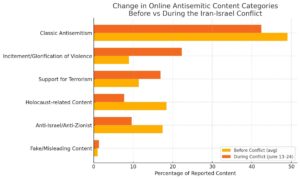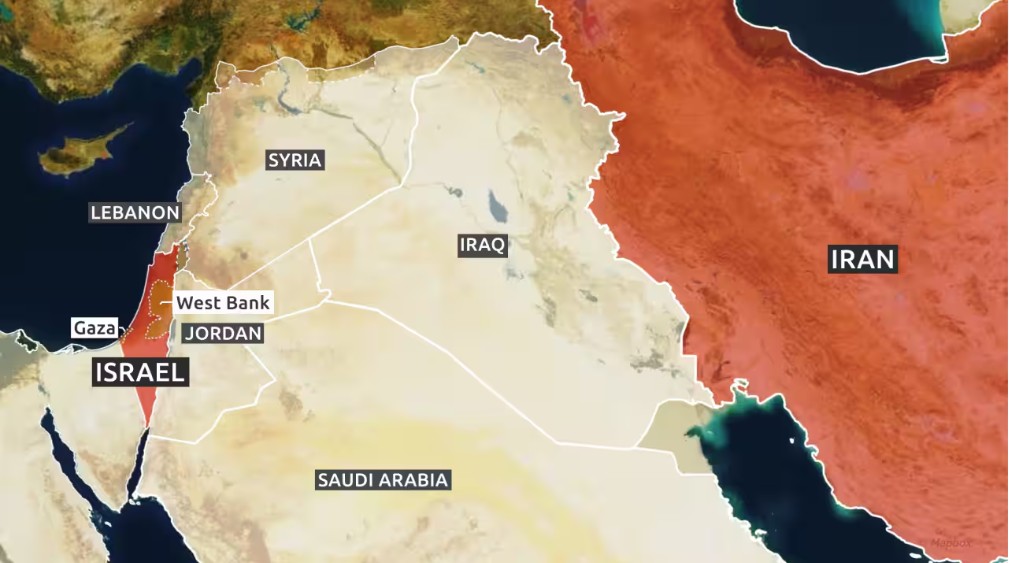This past month reminded us how closely online hate follows world headlines.
FOA’s new report captures what happened online during 12 critical days in June 2025. The findings are sobering – not just for what they reveal about the scale of antisemitism, but how quickly it responds to geopolitical events.
The Trigger: A Preemptive Strike Fuels a Firestorm
On June 13, 2025, Israel launched a preemptive operation against Iran’s nuclear and missile infrastructure. Within hours, antisemitic content exploded across social media platforms. Posts targeting Jews flooded feeds, resurrecting old conspiracies, glorifying violence, and twisting reality with AI-generated disinformation.
This escalation didn’t happen in a vacuum. The Hamas-led October 7 massacre triggered a 400% increase in online antisemitism, a wave that never fully receded. The outbreak of hostilities with Iran reignited this hate with new, dangerous intensity. FOA’s global volunteer network immediately mobilized, with trained volunteers documenting and reporting hundreds of examples of hate across TikTok, YouTube, Instagram, X (Twitter), and VK, using both manual and AI-powered monitoring systems.
What Changed Online During the Conflict?
Our report compares online content during the Iran-Israel conflict (June 13–24) with the three months prior. Here’s what we found:
- Classic antisemitism remained dominant, but dropped from 49% to 42.4%
- Incitement and glorification of violence more than doubled, rising from 8.9% to 22.3%
- Support for terrorism rose to 16.9%, up from 11.4%
- Holocaust denial and distortion dropped, replaced by more direct violent content
- Fake content and deepfakes increased slightly – but remain a growing threat

These shifts point to a disturbing trend: when conflict breaks out, antisemitism doesn’t just resurface – it transforms, becoming more aggressive, more visible, and more dangerous.
Inconsistent Platform Responses Put Communities at Risk
Despite hundreds of reports from FOA, platform responses to this surge in hate were alarmingly uneven:
- TikTok was the most responsive, removing 91.6% of flagged content.
- YouTube removed only 14.3%.
- X removed a mere 12.5%, leaving some of the most extreme posts online.
This failure to act swiftly allows dangerous content to spread widely, reinforcing antisemitic narratives and putting real communities at risk.
Why This Report Matters
This isn’t about isolated incidents. It’s a pattern.
Each time geopolitical tensions rise, Jews become online targets – blamed, demonized, and dehumanized. Antisemitism adapts to the moment, embedding itself into global discourse in real time.
Our volunteers report what platforms miss. But reporting alone is not enough. We need tech companies to take real responsibility – and we need people to understand what this hate looks like when it breaks through.
📄 Download the full report
🎙️ Watch FOA Chief Advisor Jacob Dalal discuss the findings in his i24 News interview on YouTube.
✋ See it. Report it. Stop it.

